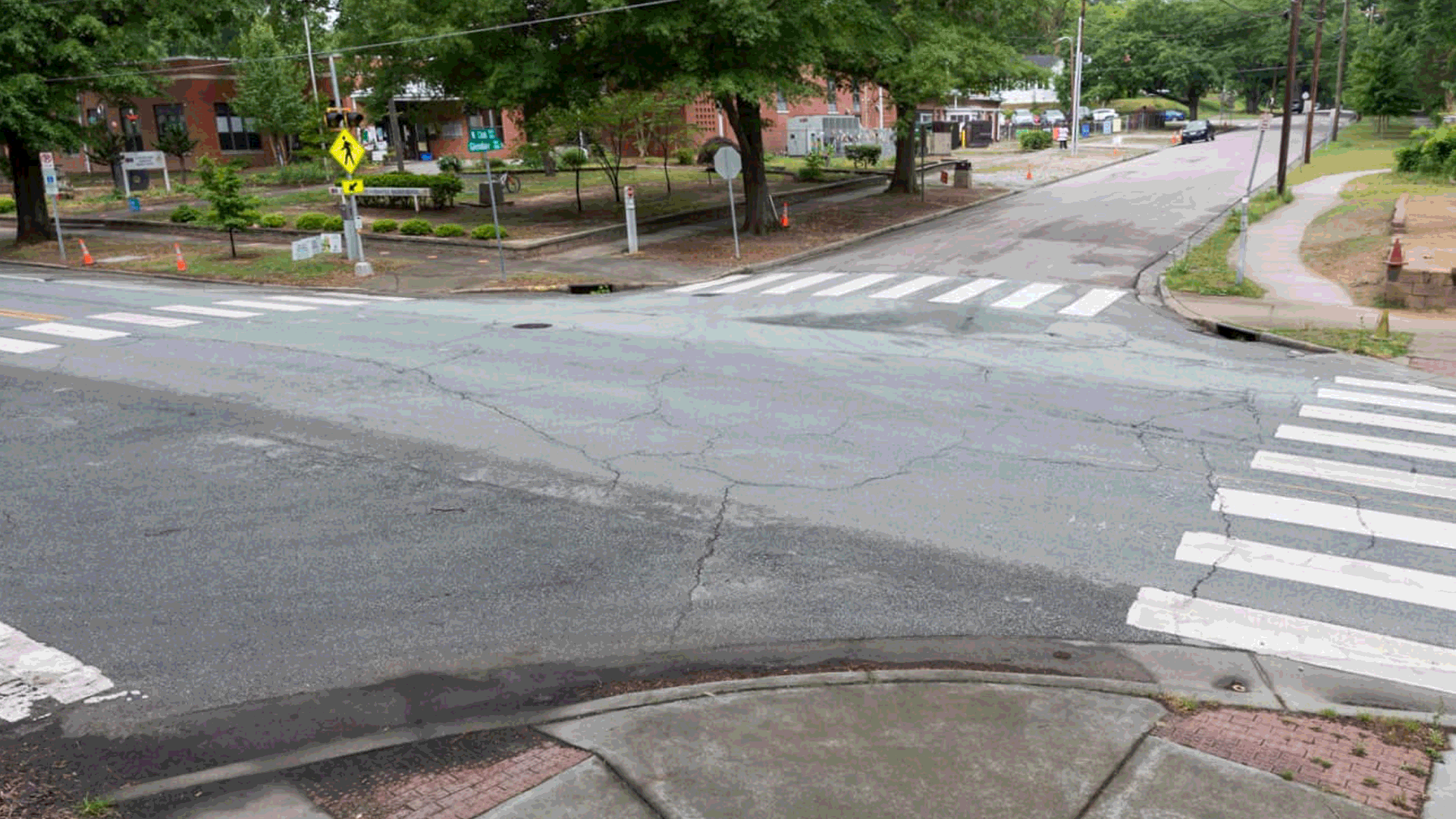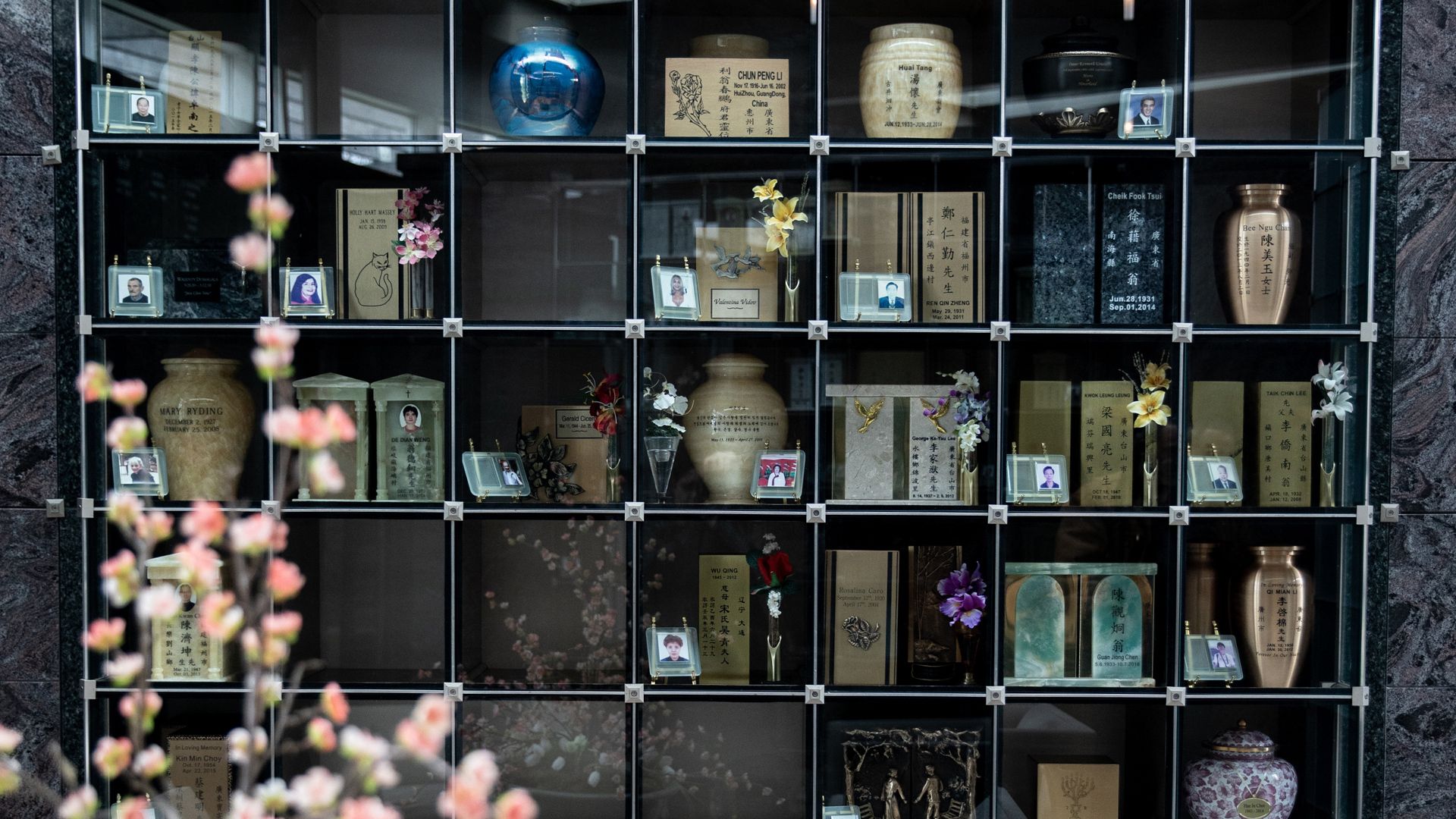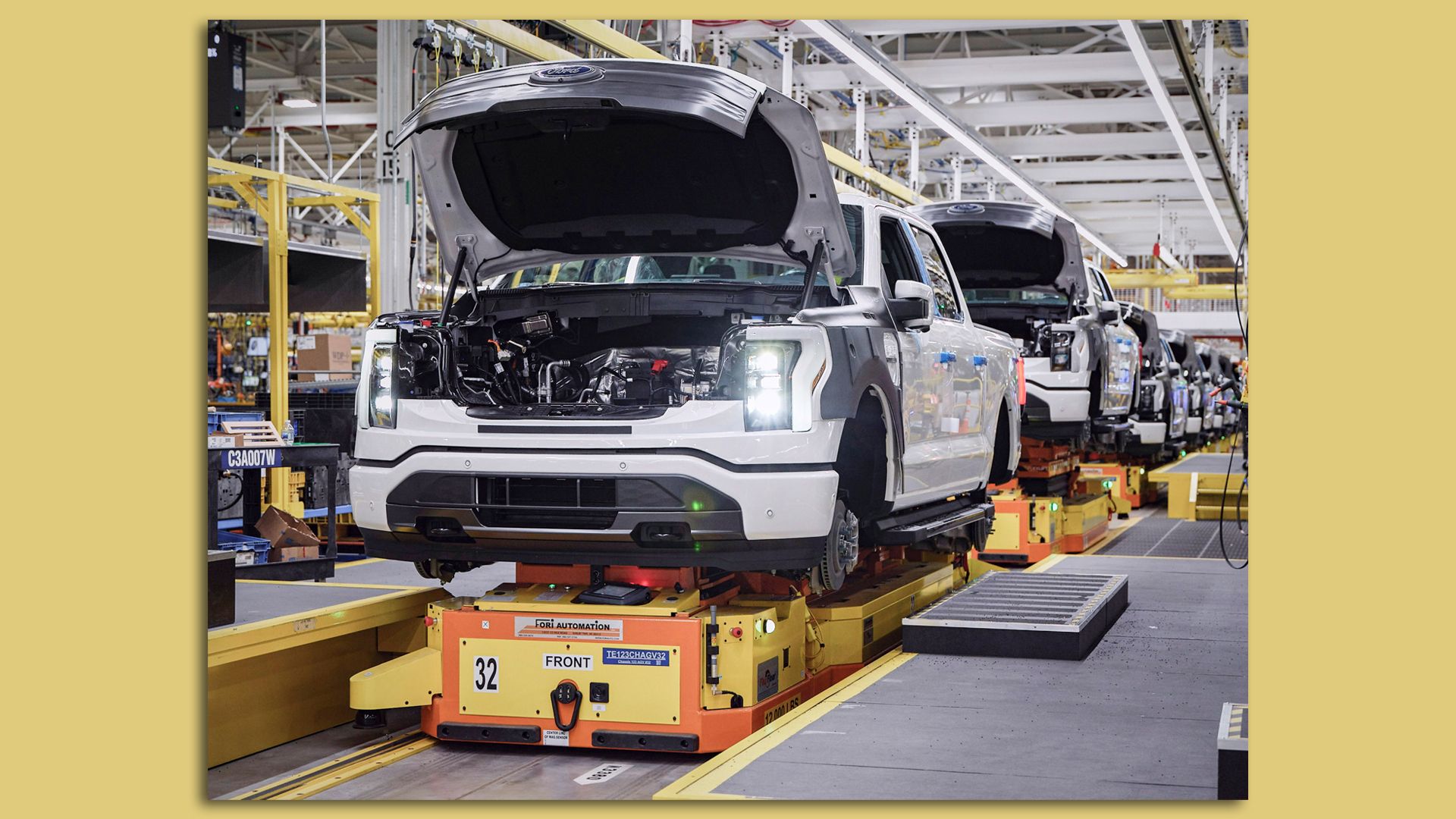| | | | | | | | | | | Axios What's Next | | By Jennifer A. Kingson and Joann Muller · Apr 27, 2022 | | Welcome back! Imagine if roads were built for pedestrians and cyclists, instead of cars. A lot of people think it's time to shift our priorities to make streets safer. Today's Smart Brevity count: 1,218 words ... 4½ minutes. | | | | | | 1 big thing: Controversy over colorful crosswalks |  | | | How street art transformed an intersection in Durham, N.C. Credit: Eric Waters/Bloomberg Philanthropies | | | | Streetscape art — think colorful crosswalks and painted intersections — can do a lot to liven up communities and make streets more welcoming. Yet it might seem like a potential distraction for drivers, Joann Muller writes. - But new research shows the opposite is true: Painted roadways often make intersections safer by encouraging motorists to slow down and be on the lookout for pedestrians and cyclists.
Why it matters: American roads have been getting deadlier amid a surge in reckless driving, which worsened during the pandemic. Nearly 40,000 people die on U.S. roadways ever year, and pedestrian deaths are up 45% in the past decade. - Safety advocates say street design is a big contributor: U.S. roads prioritize automobiles over other road users like pedestrians and cyclists.
What's happening: To make communities more walkable, many cities have painted colorful crosswalks and murals over drab stretches of asphalt and concrete. - Bloomberg Philanthropies, founded by former New York Mayor Michael Bloomberg, is a leading proponent of the strategy. It provides grants to help cities transform their streets and bridges into colorful works of art through its Asphalt Art Initiative.
Yes, but: The federal government is no art fan — at least when it comes to painting streets. - The Federal Highway Administration has cracked down on communities for crosswalk art that doesn't conform to its uniform standards for road markings.
- Critics, including the National Association of City Transportation Officials, counter that the government has no data to back up its stance.
Driving the news: Bloomberg Philanthropies commissioned the first known study of street art to see what effect, if any, the pavement paintings have on traffic safety. - Sam Schwartz Consulting, a well-known New York-based traffic research firm, compared historical crash data and real-time video footage of human behavior before and after the art was installed at 22 sites.
What they found: City streets became considerably safer for pedestrians after incorporating art into roadway redesigns. - The data showed a 50% drop in crashes involving pedestrians or cyclists and a 37% drop in crashes leading to injuries. Overall, intersections with asphalt art saw a 17% reduction in total accidents.
- The videos showed a 27% increase in the rate of drivers yielding to pedestrians with the right of way, and a 25% drop in potentially dangerous conflicts between drivers and pedestrians.
What to watch: The Schwartz study is timely: The Federal Highway Administration is currently revising its Manual on Uniform Traffic Control Devices, the blueprint that governs everything from street lights and signage to pavement markings across the U.S. Share this story. |     | | | | | | 2. Cremation favored over caskets |  | | | Photo: Jackie Molloy for The Washington Post via Getty Images | | | | Cremation is now more popular than casket burial, which the Washington Post says reflects a more secular, transient and "death-phobic" nation. Why it matters: It's not just our lives that are changing. How we memorialize and handle our dead is shifting as well. - Cremation is about one-third the cost of a traditional casket burial, which could have huge financial ramifications for the funeral industry, per the Post.
- It's also easy to arrange through websites such as Solace and Tulip.
By the numbers: Cremation is now twice as common as it was two decades ago. - In 2020, 56% of Americans who died were cremated, compared to 27% in 2000, according to the Cremation Association of North America.
What they're saying: "Some people want it over and done with. You wonder if they'll come to regret that later," Richard Moylan, president of Brooklyn's Green-Wood Cemetery, tells the Post. "This generation just doesn't want to do the three-day-long funeral home thing." - "People want the body disappeared, pretty much. I think it reminds us of what we lost," says Thomas Lynch, a funeral director for 50 years.
What to watch: Some worry about the carbon footprint of more crematoriums, which are dependent on fossil fuels and emit greenhouse gases. - More environmentally friendly alternatives are becoming popular, including various "green" burial techniques that allow the body to naturally decompose in the ground.
Read the Post's fascinating story. |     | | | | | | 3. Still waiting for Super Mario's film debut |  | | | Super Mario movie promotional artwork. Image: Nintendo | | | | Nintendo has postponed its animated Super Mario movie until next spring, writes Stephen Totilo, co-author of Axios Gaming. The big picture: The film, plus new theme parks in Japan and the U.S., are intended to position Nintendo as an entertainment powerhouse beyond games, but the strategy has been slow to develop. - Nintendo has been famously focused on video games since the 1980s and generally ignored conventional wisdom about how it could or should branch out.
- It has licensed its gaming icons like Mario for clothing, stuffed animals, even a breakfast cereal, but it had long declined to take the biggest swings. (It probably didn't help that its one Hollywood attempt, 1993's "Super Mario Bros." movie, bombed.)
What they're saying: "My deepest apologies but I promise it will be well worth the wait," Mario series creator Shigeru Miyamoto said in a tweet announcing the film's delay until April 2023. |     | | | | | | A message from Axios | | Communication takes the front seat | | |  | | | | Leaders at every level are resetting their communications strategies to better support hybrid workforces. See how two orgs — Lyft and UPS — are reinvesting in their teams and sharpening their communication habits staff-wide. Tune in on 4/29 | | | | | | 4. Texas is crypto country |  | | | Illustration: Rae Cook/Axios | | | | Fort Worth, Texas, has become the first city government in the U.S. to mine bitcoin, writes Michael Mooney in Axios Dallas. Why it matters: At every level of government, officials are recognizing that cryptocurrency will be an important part of the future. Some, like Fort Worth, are signaling that they are open for business. Catch up quick: Bitcoin "mining" is how new cryptocurrency enters into circulation. It's performed using sophisticated hardware that solves a complex computational math problem. The first computer to find the solution to the problem receives the next block of bitcoins — and the process begins again. - The process uses a large amount of electricity, which takes a toll on the environment.
What's happening: Fort Worth will join the Luxor Mining Pool, a U.S.-based company, says Carlo Capua, deputy chief of staff to the Fort Worth mayor and City Council. Luxor has agreed to assist with any maintenance or repairs needed. - The mining machines will run around the clock in a climate-controlled data center located at Fort Worth City Hall and housed on a private network to minimize security risk.
What to watch: At the conclusion of the six-month pilot program, the city will do an assessment of the implications and opportunities for bitcoin in Fort Worth. |     | | | | | | 5. Ford starts production of electric F-150 |  | | | Autonomous robots carry Ford F-150 Lightning trucks through the factory. Photo courtesy of Ford | | | | After nearly three years of hype, Ford Motor Co. finally celebrated the launch of its electric F-150 Lightning pickup truck on Tuesday. Why it matters: It's a bet-the-company product for CEO Jim Farley and a giant test of whether Americans will accept electric vehicles. The F-150 is the most popular vehicle — car or truck — in the country, so the automaker has to be careful about messing with success. - "The Model T over 100 years ago brought cars to everybody. Well, this vehicle will bring electric vehicles, particularly electric trucks, to everybody," executive chairman Bill Ford, the great-grandson of company founder Henry Ford, told CNN.
Ford is displaying plenty of swagger about its plug-in truck; it helps that there's a waiting list of 200,000 potential buyers. - The company has tripled its original production target to 150,000 vehicles per year.
Of note: Ford's EV factory in Michigan uses autonomous robots to move trucks from one work station to another, instead of a conventional assembly line. What to watch: At Tuesday's event, Farley teased that another electric truck is on the way. - "We're already pushing dirt down in Blue Oval City in Tennessee for another electric pickup truck that's different than this one," Farley said.
|     | | | | | | A message from Axios | | Communication takes the front seat | | |  | | | | Leaders at every level are resetting their communications strategies to better support hybrid workforces. See how two orgs — Lyft and UPS — are reinvesting in their teams and sharpening their communication habits staff-wide. Tune in on 4/29 | | | | Was this email forwarded to you? Get your daily dose of What's Next magic by signing up for our free newsletter here. |  | It's called Smart Brevity®. Over 200 orgs use it — in a tool called Axios HQ — to drive productivity with clearer workplace communications. | | | | | | Axios thanks our partners for supporting our newsletters. If you're interested in advertising, learn more here.
Sponsorship has no influence on editorial content. Axios, 3100 Clarendon Blvd, Suite 1300, Arlington VA 22201 | | | You received this email because you signed up for newsletters from Axios.
Change your preferences or unsubscribe here. | | | Was this email forwarded to you?
Sign up now to get Axios in your inbox. | | | | Follow Axios on social media:    | | | | | |









No comments:
Post a Comment